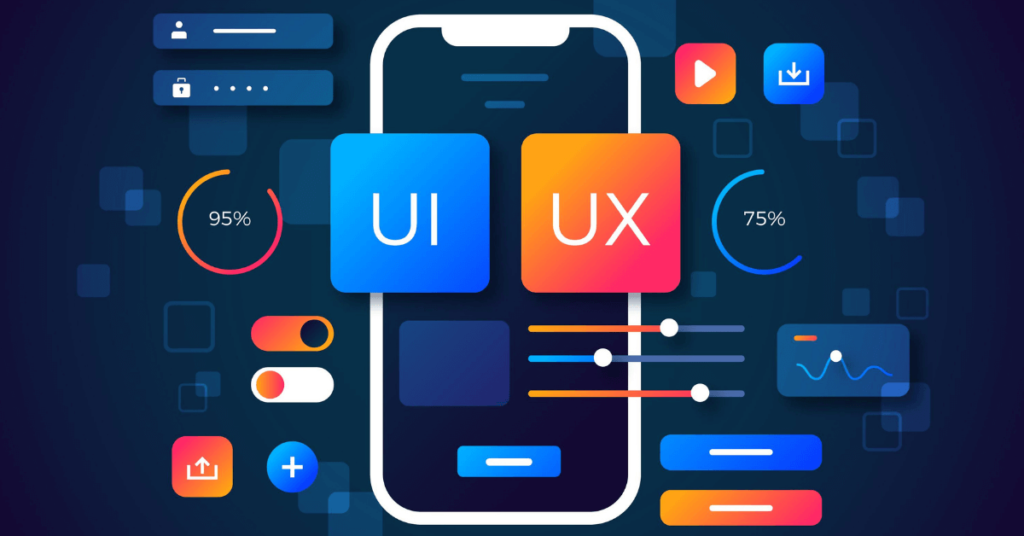Understanding of information architecture and user experience fundamentals
Information architecture (IA) and user experience (UX) are two essential aspects of digital design. IA is the practice of organizing information in such a way that it is easily discoverable and understood by users. UX, on the other hand, is the practice of designing an environment that is pleasant to use and meets the needs of users.
In order to create effective IA/UX designs, designers must understand the principles and elements that these designs consist of. This includes an understanding of IA/UX design principles such as usability, accessibility, scalability, consistency, and ease of navigation; As well as IA/UX design elements such as navigation menus, search bars, page layouts, visual hierarchy, and user feedback mechanisms. In addition, designers must be aware of best practices for creating IA/UX designs that are both functional and aesthetically pleasing.
What is user experience design?
User Experience Design (UXD or UED) is a multidisciplinary field focused on creating products and services that provide useful and relevant experiences for users. The user experience design includes the traditional human-computer interaction design (HCI), and expands this by addressing all aspects of the product or service as users see it. These include aspects such as ease of use, design, accessibility and passion. UXD professionals seek to create products that are not only functional but also fun and attractive to use.
User experience design is a process that focuses on the user’s interaction with a product or service. Includes design for user experience, from the user’s point of view, taking into account all factors affecting user experience. These factors include usability, design, accessibility and emotion. UXD professionals seek to create products and services that are not only functional but also fun and attractive to use.
A good design of the user experience requires understanding the user’s needs and expectations, the context in which the product or service will be used, the technology available, and the design constraints. UXD professionals should also be aware of how the product or service fits into the user’s lifestyle. In addition, UXD professionals should consider how to use the product or service in the long term and whether to use it across multiple devices.
User experience design is a combination of strategies, techniques and techniques used to create a meaningful, relevant and attractive experience for users. While user experience design is a multidisciplinary field, it is also a highly specialized profession. UXD professionals have a deep understanding of user needs and design principles focused on user and technology. They work with a team of designers and developers to create intuitive, fun and memorable experiences.
Designing the user experience is becoming increasingly important as people rely more on technology in their daily lives. A well-designed user experience can make a big difference to the success of a product or service. By creating an interactive experience, UXD professionals can make sure users return for more.
What is the user interface (UI)? What is its usefulness in designing websites and smart phone applications?
The user interface (UI) is an important part of any website, application or product. It is the interface between the user and the system, and it is the main tool used by the user to interact with the product. User interface design is the process of creating a user interface to allow users to interact with the product in a more effective and efficient manner.
User interface design focuses on making the user experience as intuitive and user-friendly as possible. The good design of the user interface should be visually attractive and easy to use. It should also facilitate user interactions with the product, facilitating learning and use.
One of the most important uses of user interface design is website design. Websites are user-facing products, and it is important that the user experience is as seamless as possible. Websites must be designed so that they are visually attractive, easy to browse, and easy to use. Designers should pay attention to website layout, color scheme and site printing, as well as the overall navigation structure.
Another important use of user interface design is in the design of mobile apps. Mobile apps are becoming increasingly popular and it is important to be designed to be user-friendly and intuitive. As with web design, mobile app designers should pay attention to user interface, planning and interaction elements.
UI design is an important aspect of software and web development. It is the bridge between user and product, a key factor in making sure that users have a positive experience with the product. By designing visually attractive, intuitive and user-friendly interfaces, designers can ensure that users can interact with the product in a meaningful and effective manner.
What are the tools needed to implement high-quality UI and UX?
It is essential to have the right tools to ensure the quality of UI (information engineering) and UX (user experience) for your website. Without the right tools, you will not be able to identify user needs, plan user trips and create an effective user experience. Here are the four basic tools needed to implement a successful UI and UX:
- User research: Collecting user data is key in creating effective UI and UX. Through different user search methods, such as surveys, interviews, focus groups and usability testing, you can gain insights into users and their needs. This will help you understand your target audience and design an experience that meets their needs.
- Network planning: Network planning is an important step in creating effective UI and UX. It allows you to create a visual representation of the structure and flow of your website. It also helps you plan user trips, plan mobility, and create a prototype that can be tested and optimized.
- Prototypes: Prototypes are a crucial step in the UI and UX process. It allows you to create an interactive clickable version of the wire frame. This allows you to test the design with users and get real-time feedback about their experience.
- Usability test: Usability test is an essential step in the UI and UX process. It allows you to test the prototype with real users and get feedback on design usability and effectiveness. This is important to identify usability issues and improve design before launch.
The implementation of UI and UX high quality requires the right tools and processes. By collecting user data, creating wire frames, prototypes, and testing usability, you can create effective UI and UX that meets your users’ needs.
To communicate with the first company in Kuwait to design programs and smart phone applications
96522215111+
info@sourcemediakw.com
Follow us on Instagram
Follow us on Twitter


